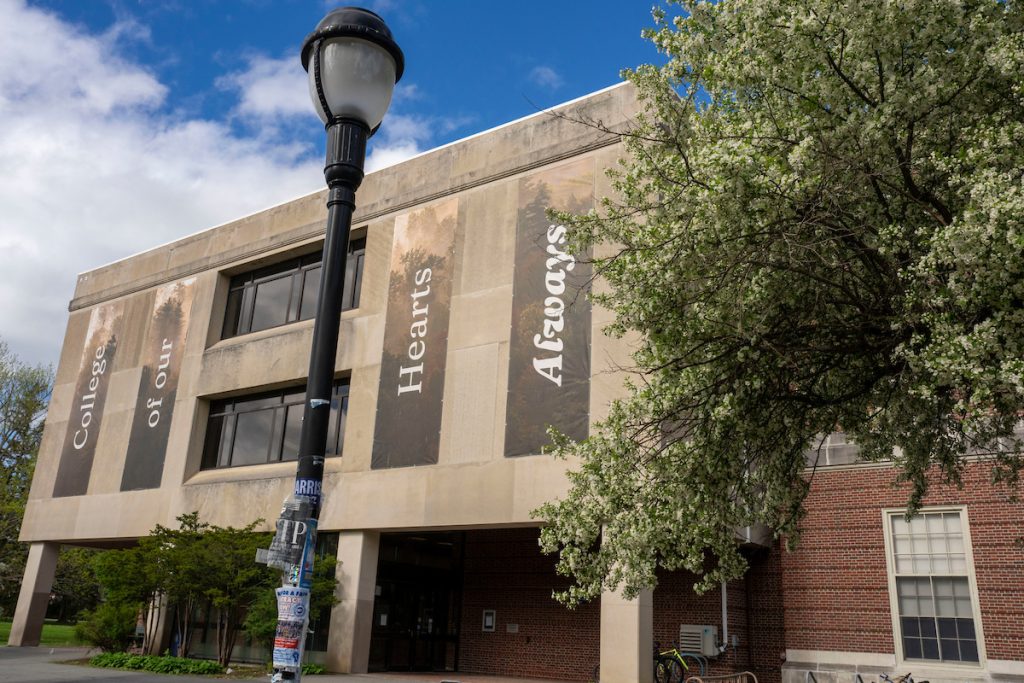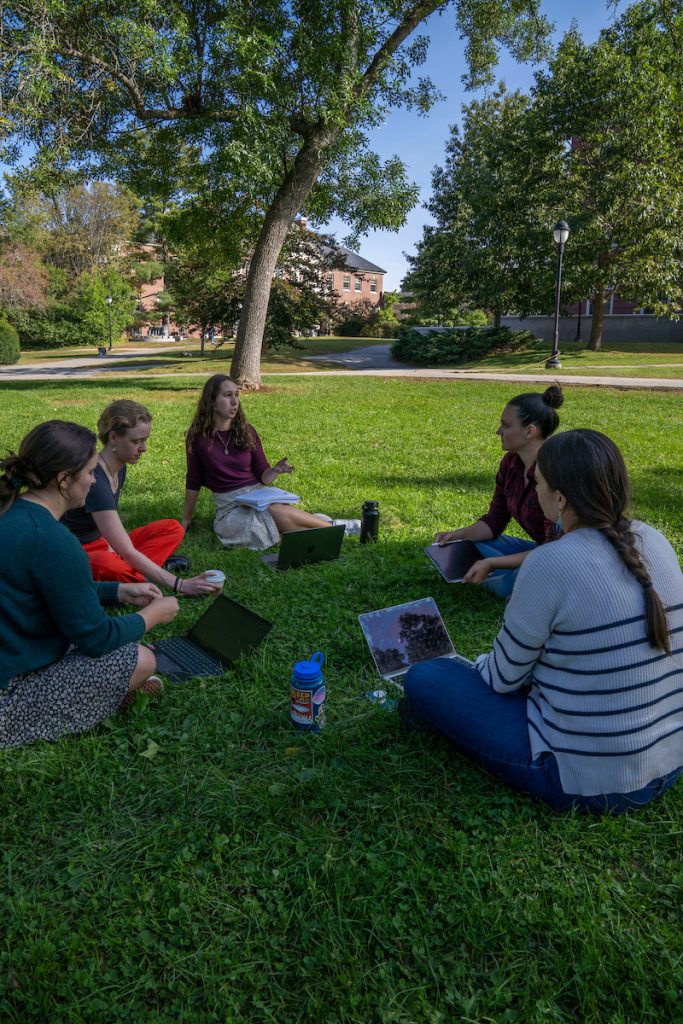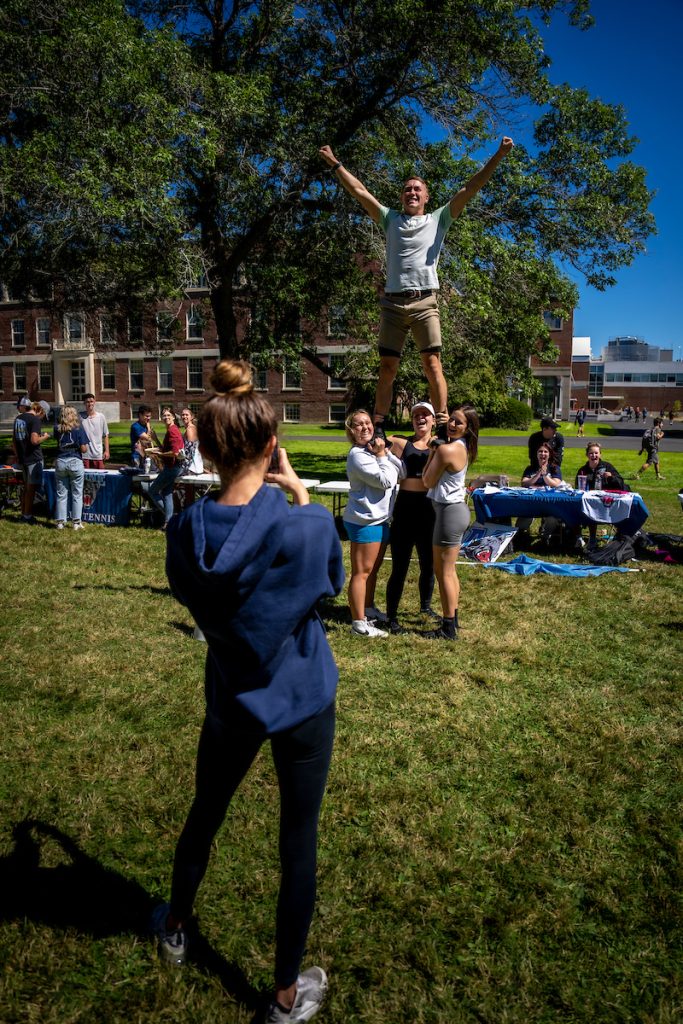Hazing Prevention
Being a part of a campus group or organization is an important and meaningful part of the student experience at the University of Maine. Hazing can be a hidden problem associated with these groups that undermines the value of the experience. It is important to provide research-based education and prevention programs that address the harmful effects hazing can have on our students.

Hazing is not only an individual issue, but a concern that counteracts the University of Maine’s mission and threatens permanent damage to the educational experience, careers, and well-being of members of the Black Bear community. The resources listed here are designed to help the University community recognize, prevent, and report hazing in our community.

What is Hazing?
Hazing can be broadly defined as any action or situation that recklessly or intentionally endangers the mental or physical health of any person, student, or student organization or any activity expected of a person, student, or student organization as a condition of joining or maintaining membership in a group that humiliates, degrades, abuses or endangers the student, regardless of the student’s willingness to participate in the activity.
The links below provide the specific definitions, processes, and examples of behaviors as set by The University of Maine, the State of Maine, and the Stop Campus Hazing Act.
Hazing Alternatives
Introducing new members to a group is a process that can create powerful group chemistry and develop high levels of motivation for new members from their very first experience with the group.
The most effective way to inspire people is to follow the principles that underlay intrinsic motivation. Hazing rituals are generally about extrinsic motivation, including external reward or punishment associated with performing a particular act. Intrinsic motivation is optimal when a group’s culture emphasizes four things: connectedness, autonomy, purpose, and mastery.


Prevention and Awareness programs
To cultivate a campus environment prioritizing student safety and well-being, UMaine implements comprehensive hazing prevention and awareness programs. These initiatives focus on educating the university community – including students, faculty, staff, and alumni – about the definition of hazing, its harmful physical and psychological effects, and the legal ramifications for individuals and organizations involved.
These programs emphasize positive group building activities and healthy team dynamics as alternatives to hazing, while also clearly outlining reporting procedures and the University’s policy towards such behaviors.
Campus Hazing Transparency Report
Pursuant to Section 485(f) of the Higher Education Act of 1965 (20 U.S.C. 1092(f)), the University provides a report of past hazing misconduct involving student organizations. The information below includes the name of the student organization, the dates (if known) of the hazing behavior, the date such behavior was reported to the University, the dates of investigation and when the organization was found responsible, and a description of the findings. Beginning in Spring 2025 and in accordance with Section 485(f) of the Higher Education Act of 1965 (20 U.S.C. 1092(f), the information will also include whether any findings of hazing involved the abuse or illegal use of alcohol or drugs and the date(s) the University provided notice to the student organization that the incident resulted in a hazing violation. Reports of hazing that did not result in a finding of responsibility are not included. The report will be made public on The University website and updated within 6 months of any new findings of responsibility for a hazing incident. The University will maintain the information for ten years following the date of initial disclosure.
Annual statistics on hazing are available in the University’s Annual Fire Safety and Security Report. Please note that hazing statistics will be included beginning with the 2026 report (issued in 2027). Hazing statistics include incident reports that meet the federal definition of hazing in Section 485(f)(6)(A) of the Higher Education Act of 1965 (20 U.S.C 1092(f)(6)(A)). Such statistics do not reflect actual findings of hazing behavior, which are included in the Campus Hazing Transparency Report.
For all incidents prior to July 1, 2025 please see the list below. All incidents occurring after July 1, 2025 can be found here (Site TBD).

Report Hazing
If you are currently in a dangerous situation, call 911 for immediate assistance.
Any person who believes they have been subject to hazing, has witnessed hazing, or has knowledge of any activity or conduct which may constitute hazing is encouraged to report their concerns to the offices below or submit a report using the UMS Hazing Reporting Form. Hazing is a crime and can also (or independently) be reported to the Police Department in the jurisdiction where the hazing occurred.
Reports may be made anonymously. Please be aware that if you include any identifying information you may be contacted for further details. Should you choose to file an anonymous report, the University may be limited in responding to or fully investigating the complaint. Should the University take action on an anonymous report, the reporter is still protected from retaliation. If you file an anonymous report and are retaliated against, please contact the Office of Community Standards, Rights, and Responsibilities immediately.
- UMaine Police Department
(207) 581-4040
The UMaine Police Department can provide non-emergency assistance. They also offer the anonymous reporting tool, Campus Eyes. - Division of Student Life
(207) 581-1406
The Division of Student Life will direct you to the appropriate resource if you are unsure how to proceed. - Fraternity and Sorority Life
(207) 581-1796
Staff members in the Office of Fraternity and Sorority Life will assist with issues involving fraternities and sororities on campus.
Questions?
Contact the Office of Community Standards, Rights, and Responsibilities at communitystandards@maine.edu
